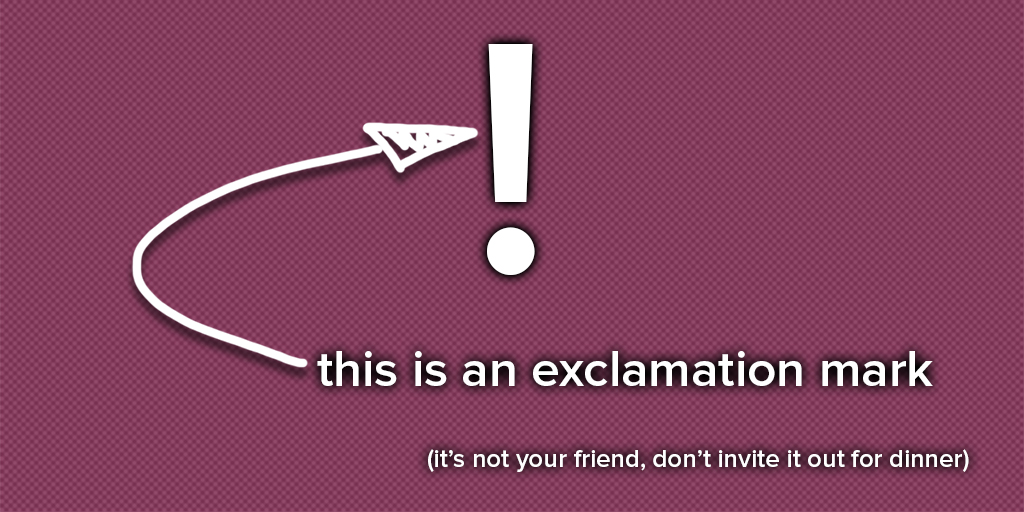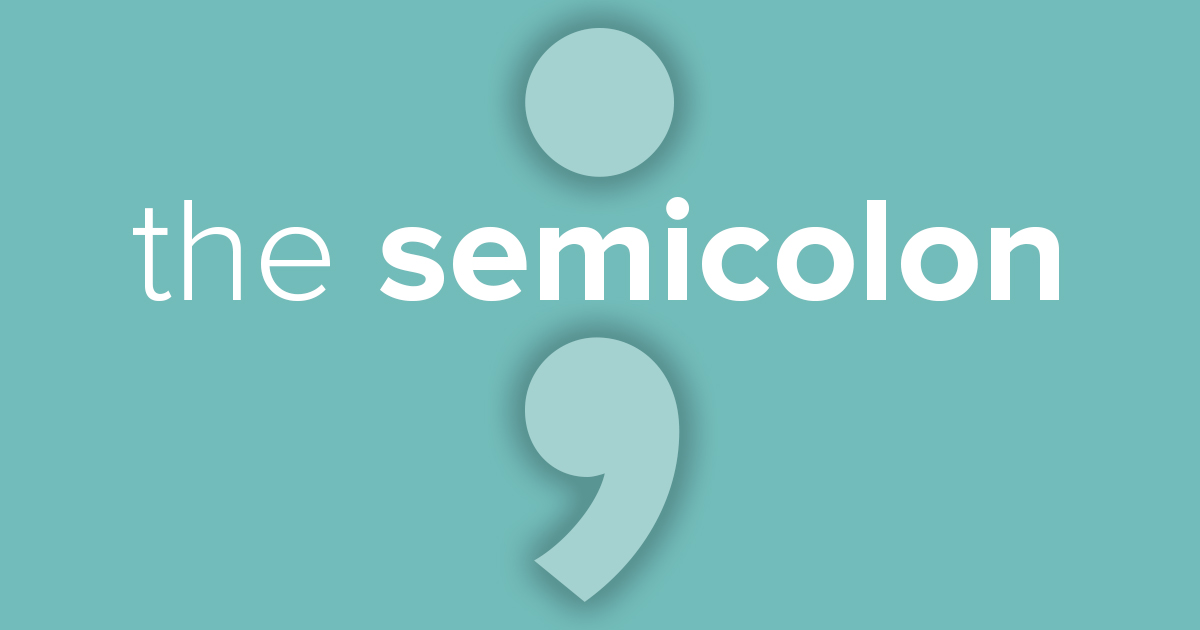When was the last time you used an exclamation mark? Be it on social media, a text, a letter, or (forbid) your B2B copy?
How did hitting SHIFT + 1 make you feel? Fun, wacky… dirty?
You see, the exclamation mark has a right stinking reputation. The mere mention of it sends our David McGuire retching over the nearest bin, drawing scornful parallels to Timmy Mallet and Zane Lowe.
They say the exclamation mark has no place in B2B copywriting.
A B2B copywriter’s view
Are we just being precious? What happens when you want to articulate a sense of:
- Surprise!
- Elation!
- Warning!
- Drama!
- Humour!
Well, for starters, how annoying does that list look?
The message you are trying to convey doesn’t need extra bells and whistles to make an impact. As F. Scott Fitzgerald once said:
“One should never use exclamation marks in writing. It is like laughing at your own joke. Cut out all those exclamation points.”
And there you have it, the man behind The Great Gatsby believes it to be self-celebratory fluff. But that was then, and this is now. Writing has moved on; we live in an era where anyone can be “published”, and where fast-food content rules the roost. What could F. Scott Fitzgerald possibly know of the Buzzfeed generation?
Not a lot, I’d imagine, but we can ask somebody who does. The next best thing, our very own copywriting stallion George Reith. Here’s his take on the exclamation mark…
“I agree with Fitzgerald; I feel it draws too much attention. It’s a classic example of telling rather than showing. If it’s something noteworthy, it should be obvious from the content. In fact, if you must tell the reader it’s important, it probably isn’t.
“At the same time, if you are writing something wacky, you can use an exclamation mark in a somewhat ironic, self-aware way. I’m talking about frivolous fun stuff, like an interactive quiz: ‘Tell us what OS you use, and we’ll tell you what martial arts movie star you are!’
“But if it’s a blog or an eBook, the moment you hit that key – you lose all credibility.”
What about professional email?
The first exclamation mark appeared in print around 1400, and approximately 609 years later, The Guardian reported it was having a comeback. Only in this case, revived by the age of email.
We’re all guilty of slapping an “!” at the end of an email, even if it was “just the one time”. I mean, compare the following:
“Thanks! This is great!”
To
“Thanks. This is great.”
Both convey gratitude – or in the latter’s case, thinly veiled sarcasm – but there’s something oddly satisfying about receiving a tacked-on exclamation mark.
Some may argue it comes across vacuous, but there’s an evident delight you can’t help but take to heart (in a good way). Whether you’re comfortable using it when mailing your boss, well, that’s your call.
So, is the exclamation mark ever justified?
That’s a question you need to ask yourself. Are you prepared to disrupt the legitimacy of your work for the sake of telling the reader, “Hey, this bit has oomph! Can’t you tell?”
If not, then no – don’t use it in your copy. Especially not the B2B kind.
On the other hand, if you’re sending an email to a friendly colleague and you’re genuinely happy/shocked by what you’re saying… then hey, who am I to judge? I do it all the time.
But just remember, as our Matt Godfrey once said:
“It’s the B2B copy equivalent of an odd, middle-age man wearing a Tasmanian Devil tie and silently shouting, ‘Please be my friend’ at passing strangers.”
No thanks! Oh, I mean: no thanks.
For more copywriting tips, sign up to our monthly email for B2B copywriting insights.



